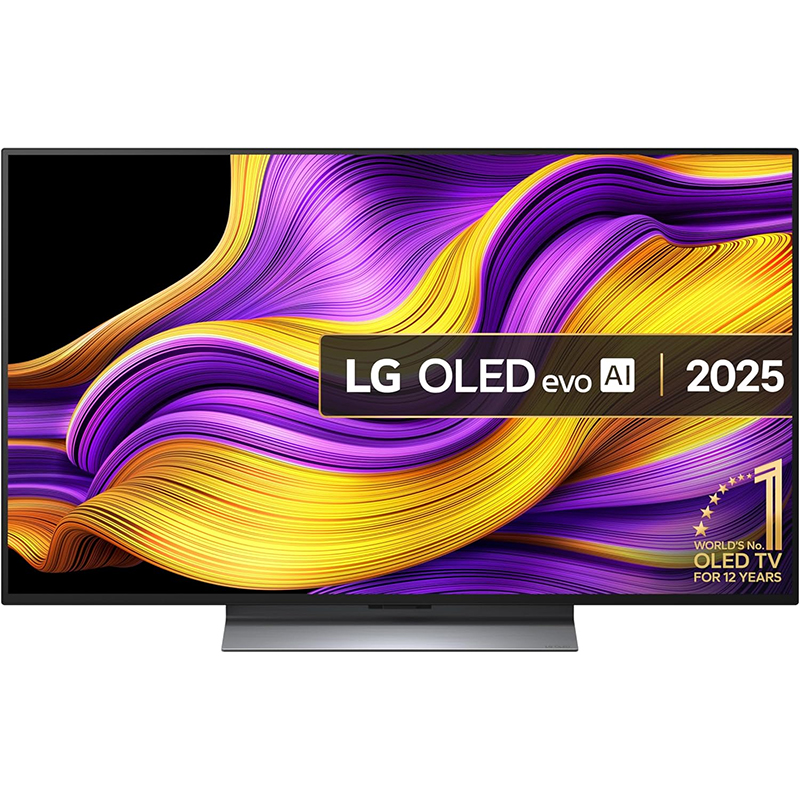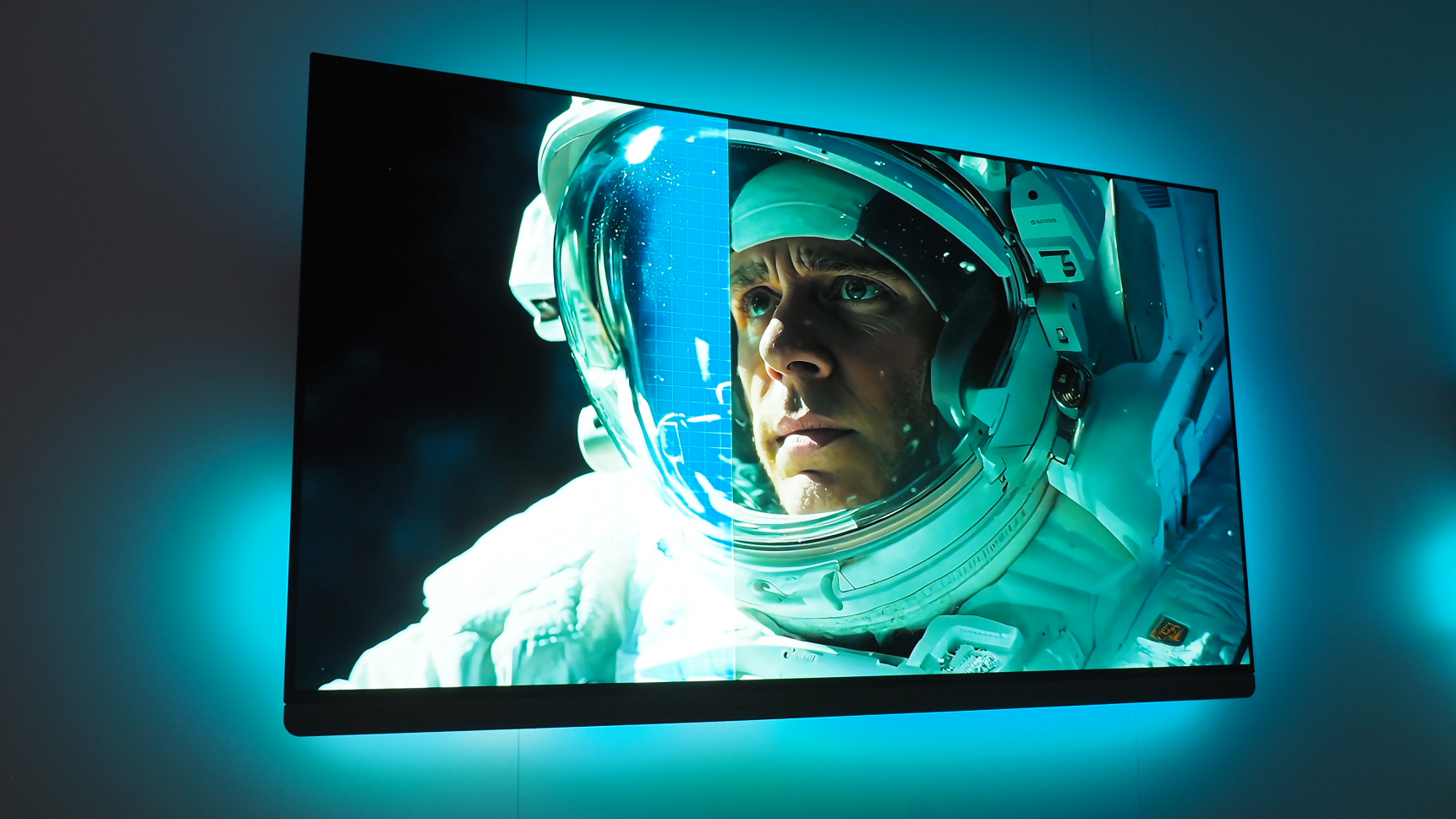
After a busy season when I've been testing many of the best OLED TVs, it's clear that LG remains the king of OLED technology. I mean, that has to be the case – it is the company that produces the panels, after all.
But while I've been hugely impressed by the top-tier LG OLED G5 – which introduced a new multi-layer OLED technology to TVs – I've also just finished testing out Panasonic's latest, the Z95B, which actually betters it in some ways.
There's more, too, with Philips' latest OLED+910 now also on sale – which I side-by-side tested against Samsung and Sony QD-OLED models – which brings the same panel technology as both the LG and Panasonic, but wrapped with its Ambilight system for an extra flash of appeal.
I certainly continue to recommend LG's OLED panels in 2025 (although it's the OLED C5, rather than G, that will suit most best – partly thanks to price). But, as food for thought, here's why these other two brands are well worth your consideration (noting, however, that Philips doesn't sell in North America).
T3's Top 3 OLEDs

With its super-trim and premium design, LG's top-tier model introduced its multi-layer OLED panel technology to the world in true style. It's a cinematic and gaming powerhouse (the latter thanks to 4x HDMI 2.1 ports – meaning up to 165Hz in 4K), although its sound isn't much cop – it can't be in this sort of slender build.

Panasonic uses the G5's base panel, adds a more advanced cooling system to eke out additional peak brightness, but then marries it with a built-in and effective Dolby Atmos sound system – no soundbar required. That makes it chunkier, but your ears will appreciate it, as will your eyes.

Philips sells in the European region, not USA, which is a shame for those would-be customers – as its top set not only features the same base panel as the G5 and Z95B, meaning major brightness, there's also built-in Ambilight technology. This emits real-time LED light projections onto surrounding walls for added dramatic effect, further immersing your viewing experience.
LG v Panasonic v Philips: Price
The LG OLED G5 is available in 55-, 65- and 77-inch panel sizes with the latest OLED panel tech on board. It's also available in 48-, 83- and 97-inch forms, but with different panels.
The Panasonic Z95B is available in 55-, 65- and 77-inch sizes – the trio of sizes that the multi-layered OLED panel technology is currently produced in.
Like the Panasonic, the Philips OLED+910 is available in 55-, 65- and 77-inch sizes.
Get all the latest news, reviews, deals and buying guides on gorgeous tech, home and active products from the T3 experts
As a like-for-like comparison I've compared the 65-inch models' prices to give an idea of price variance, in the table below:
65-inch | UK | EU | USA | Aus |
LG OLED G5 | £2,399 | €3,999 | $2,499 | AUS$5,299 |
Panasonic Z95B | £2,299 | €3,899 | $3,399 | AU$N/A |
Philips OLED 910 | £2,199 | €2,999 | $N/A | AU$N/A |
What's Unique?
So why might you chose any one of these sets over the other? Here's a quick overview
LG OLED G5

For me, this is the best wall-mountable OLED TV, as it's the most slender, most premium in design, and will look the part.
That's not to take away from its image quality, mind, which is second to none. The cinematic quality to its images is impeccable.
Gamers will love that all four HDMI ports are the 2.1 type, though, ensuring future compatibility with everything.
You'll likely want to save the eARC port for the best soundbar to pair with this LG TV, though.
Panasonic Z95B

Panasonic might seem like an underdog, but it's been at this game for years – it's just been absent from the US market, until now.
The Z95B is a stellar introduction, too, with image quality that's opulent yet believable, leveraging everything the LG can offer.
It's only got two of four HDMI ports as the 2.1 type, though, meaning two are 2.0 – not so good for future-proofing and gamers.
That said, you'll never likely want to use the eARC socket for one of the best soundbars, as this set's Technics-tuned 5.1.2 system is genuinely impressive.
Philips OLED+910

A bit of an outlier, as you can't buy Philips in the USA. But on the continent its high-level of spec and addition of Ambilight make for a really appealing offering.
Not only that, as you'll have seen in the pricing section, Philips savvily undercuts its competition by being the more affordable of the lot – only by a margin, but that's still meaningful.
It's interesting that adding Ambilight doesn't further add to the amount you'll need to pay. I love the Ambilight effect (my last-gen 809 model is in my living room between testing new sets, so I'm used to it).
Which OLED wins?
So what's the best of the best in this OLED trio then? Picture quality is impeccable among all three, so it's the other differentiating factors that help separate them.
If sound is important, but you don't want to faff with an additional soundbar, and don't think wall-mounting is for you, then Panasonic's Z95B is the full package.
If you want full-on future-proofing, however, then the LG OLED G5 is the only model with all four HDMI ports at the 2.1 specification. That means up to 165Hz frame-rates for PC and (in the future, perhaps) console gamers. Its pictures are also sublimely cinematic, so not just good for gamers.
Lastly, if you want to save a few bob, but love the idea of Ambilight, then Philips' unique technology really adds to immersion. Anyone who comes into your house and sees this in action will be impressed by this rare sight, too. It's a real point of distinction, only furthering an already high-end set's appeal.

Mike is T3's Tech Editor. He's been writing about consumer technology for 15 years and his beat covers phones – of which he's seen hundreds of handsets over the years – laptops, gaming, TV & audio, and more. There's little consumer tech he's not had a hand at trying, and with extensive commissioning and editing experience, he knows the industry inside out. As the former Reviews Editor at Pocket-lint for 10 years where he furthered his knowledge and expertise, whilst writing about literally thousands of products, he's also provided work for publications such as Wired, The Guardian, Metro, and more.
You must confirm your public display name before commenting
Please logout and then login again, you will then be prompted to enter your display name.
